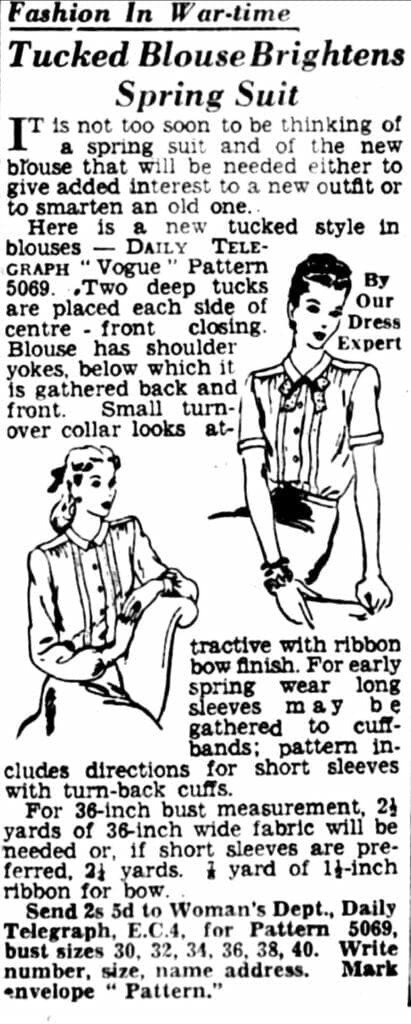The post-World War II era witnessed a dramatic shift in fashion trends. This Fashion Post delves into the evolving styles from 1945 to 1965, highlighting the key changes and influences that shaped the fashion landscape during this period. Utilizing resources from the Gale Primary Sources archive, specifically The Telegraph Historical Archive, we can gain valuable insights into this transformative period in fashion history.
From Boxy to Fitted: The New Silhouette
The rigid, padded shoulders and boxy lines popular during wartime quickly fell out of favor. Parisian fashion houses spearheaded a movement towards softer silhouettes, introducing innovative designs and restyling techniques for women’s clothing. Two-piece dresses with slimming lines emerged as the epitome of chic, offering a youthful and sophisticated edge. Articles like “Two-Piece Dress On Slimming Lines” from the Daily Telegraph provided women with guidance on achieving this new look. The emphasis shifted to “tucked blouses,” signaling a departure from the structured styles of the past.
The Return of Pre-War Styles
The end of wartime restrictions allowed for the resurgence of pre-war fashion elements. Previously banned styles, like “large bellows patch pockets” on military uniforms, made a comeback. This cyclical nature of fashion is evident in the re-emergence of trends throughout history, proving that what was once old can become new again. The lifting of these regulations symbolized a return to freedom and individuality in dress.
The Rise of Youth Culture and the Biker Jacket
The late 1940s to mid-1960s saw global influences permeate the fashion industry. The growing popularity of motorcycling in America led to the adoption of the black leather biker jacket as a symbol of rebellion and youthful identity. Fashion became intrinsically linked to lifestyle and social groups. Articles like “Challenge to Cowboys” in the Daily Telegraph shed light on the connection between fashion choices and social gatherings, illustrating how clothing defined identity and belonging.
London: A Post-War Fashion Capital
With the increased demand for non-utility clothing for women globally, London emerged as a high-fashion hub. This surge in demand fueled the need for skilled designers and boosted economic growth through fashion exports. The fashion industry in London experienced a significant revival, as documented in various articles within The Telegraph Historical Archive, like “London Centre of Fashion.”
A Fashion Renaissance
The post-World War II era marked a renaissance for the fashion industry. Despite the setbacks caused by the war, fashion flourished, experiencing remarkable growth in scale, influence, and creativity. Gale Primary Sources offers a wealth of information for exploring the social, cultural, economic, and political aspects of fashion during this transformative period. This fashion post offers a glimpse into the dynamic evolution of style in the post-war world, demonstrating the enduring power of fashion to reflect and shape society.
